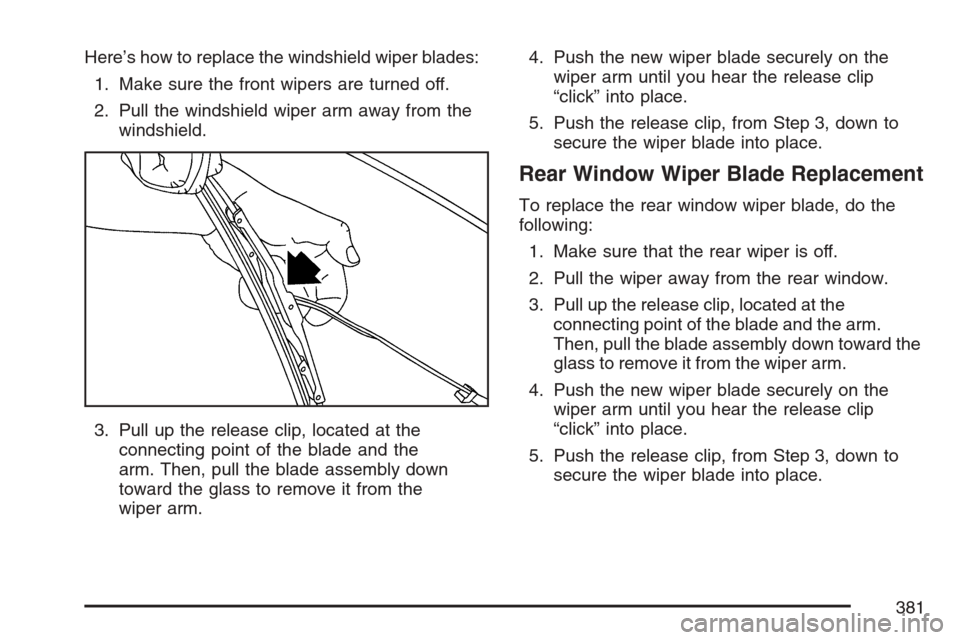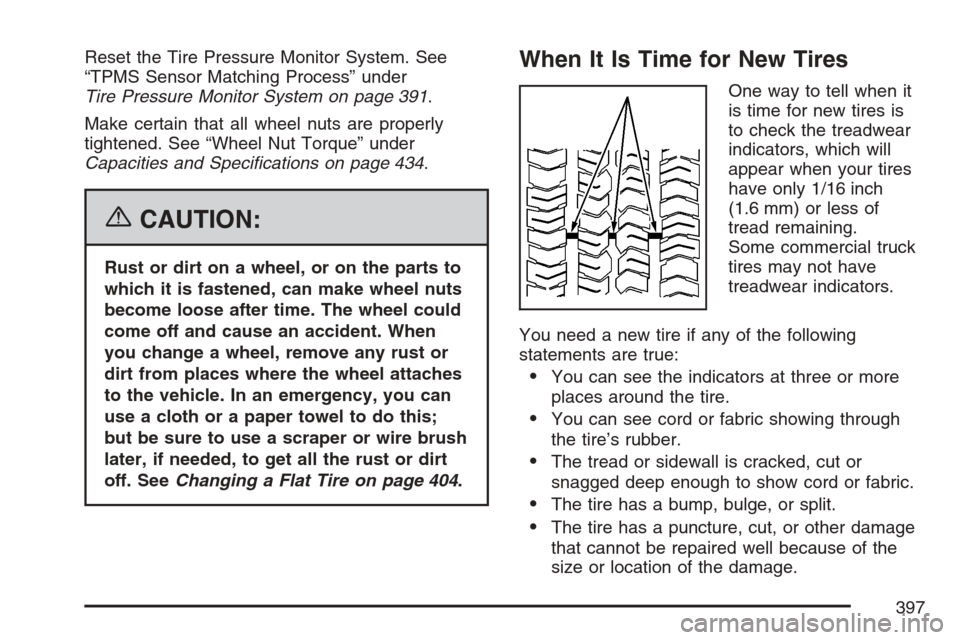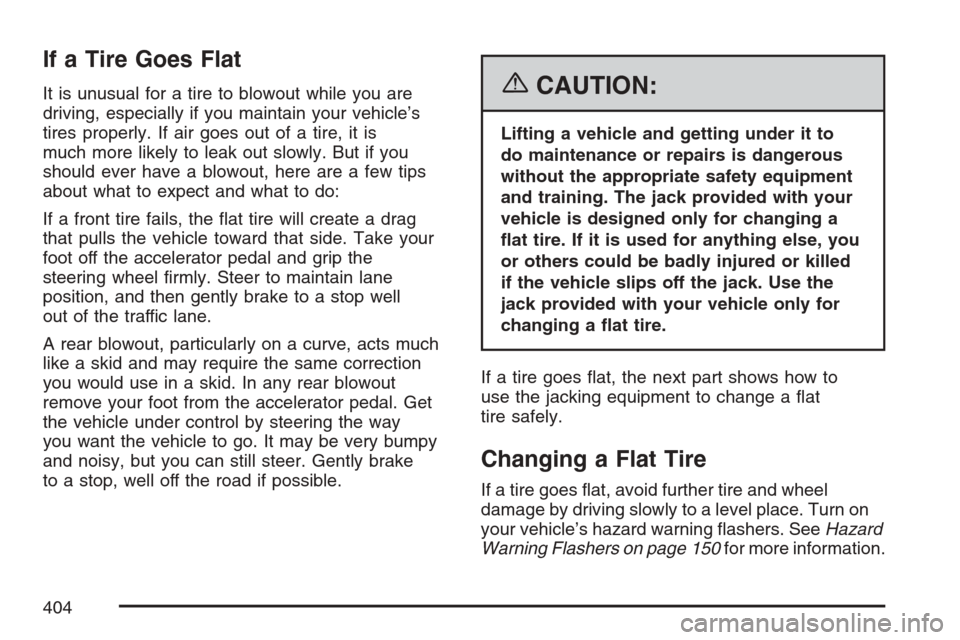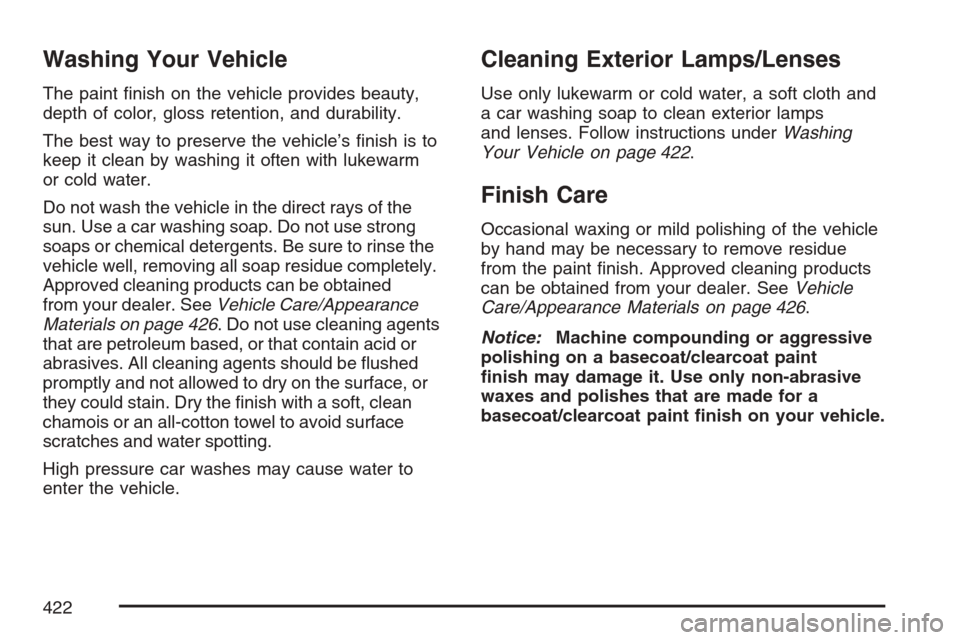Page 377 of 492
4. Remove the three headlamp assembly
attachment screws.
5. Pull the radiator cover/front grill toward you
and pull the headlamp assembly up and out
from the vehicle.A. Parking Lamp
B. Sidemarker LampC. Low/High-Beam
Headlamp
D. Turn Signal Lamp
377
Page 381 of 492

Here’s how to replace the windshield wiper blades:
1. Make sure the front wipers are turned off.
2. Pull the windshield wiper arm away from the
windshield.
3. Pull up the release clip, located at the
connecting point of the blade and the
arm. Then, pull the blade assembly down
toward the glass to remove it from the
wiper arm.4. Push the new wiper blade securely on the
wiper arm until you hear the release clip
“click” into place.
5. Push the release clip, from Step 3, down to
secure the wiper blade into place.
Rear Window Wiper Blade Replacement
To replace the rear window wiper blade, do the
following:
1. Make sure that the rear wiper is off.
2. Pull the wiper away from the rear window.
3. Pull up the release clip, located at the
connecting point of the blade and the arm.
Then, pull the blade assembly down toward the
glass to remove it from the wiper arm.
4. Push the new wiper blade securely on the
wiper arm until you hear the release clip
“click” into place.
5. Push the release clip, from Step 3, down to
secure the wiper blade into place.
381
Page 397 of 492

Reset the Tire Pressure Monitor System. See
“TPMS Sensor Matching Process” under
Tire Pressure Monitor System on page 391.
Make certain that all wheel nuts are properly
tightened. See “Wheel Nut Torque” under
Capacities and Speci�cations on page 434.
{CAUTION:
Rust or dirt on a wheel, or on the parts to
which it is fastened, can make wheel nuts
become loose after time. The wheel could
come off and cause an accident. When
you change a wheel, remove any rust or
dirt from places where the wheel attaches
to the vehicle. In an emergency, you can
use a cloth or a paper towel to do this;
but be sure to use a scraper or wire brush
later, if needed, to get all the rust or dirt
off. SeeChanging a Flat Tire on page 404.
When It Is Time for New Tires
One way to tell when it
is time for new tires is
to check the treadwear
indicators, which will
appear when your tires
have only 1/16 inch
(1.6 mm) or less of
tread remaining.
Some commercial truck
tires may not have
treadwear indicators.
You need a new tire if any of the following
statements are true:
You can see the indicators at three or more
places around the tire.
You can see cord or fabric showing through
the tire’s rubber.
The tread or sidewall is cracked, cut or
snagged deep enough to show cord or fabric.
The tire has a bump, bulge, or split.
The tire has a puncture, cut, or other damage
that cannot be repaired well because of the
size or location of the damage.
397
Page 404 of 492

If a Tire Goes Flat
It is unusual for a tire to blowout while you are
driving, especially if you maintain your vehicle’s
tires properly. If air goes out of a tire, it is
much more likely to leak out slowly. But if you
should ever have a blowout, here are a few tips
about what to expect and what to do:
If a front tire fails, the �at tire will create a drag
that pulls the vehicle toward that side. Take your
foot off the accelerator pedal and grip the
steering wheel �rmly. Steer to maintain lane
position, and then gently brake to a stop well
out of the traffic lane.
A rear blowout, particularly on a curve, acts much
like a skid and may require the same correction
you would use in a skid. In any rear blowout
remove your foot from the accelerator pedal. Get
the vehicle under control by steering the way
you want the vehicle to go. It may be very bumpy
and noisy, but you can still steer. Gently brake
to a stop, well off the road if possible.{CAUTION:
Lifting a vehicle and getting under it to
do maintenance or repairs is dangerous
without the appropriate safety equipment
and training. The jack provided with your
vehicle is designed only for changing a
�at tire. If it is used for anything else, you
or others could be badly injured or killed
if the vehicle slips off the jack. Use the
jack provided with your vehicle only for
changing a �at tire.
If a tire goes �at, the next part shows how to
use the jacking equipment to change a �at
tire safely.
Changing a Flat Tire
If a tire goes �at, avoid further tire and wheel
damage by driving slowly to a level place. Turn on
your vehicle’s hazard warning �ashers. SeeHazard
Warning Flashers on page 150for more information.
404
Page 411 of 492
9. Remove all of the
wheel nuts.
10. Remove the �at tire.
{CAUTION:
Rust or dirt on the wheel, or on the parts
to which it is fastened, can make the
wheel nuts become loose after time.
The wheel could come off and cause an
accident. When you change a wheel,
CAUTION: (Continued)
CAUTION: (Continued)
remove any rust or dirt from the places
where the wheel attaches to the vehicle.
In an emergency, you can use a cloth or
a paper towel to do this; but be sure to
use a scraper or wire brush later, if
needed, to get all the rust or dirt off.
11. Remove any rust
or dirt from the
wheel bolts,
mounting surfaces,
and spare wheel.
12. Place the compact spare tire on the
wheel-mounting surface.
411
Page 414 of 492
Storing a Flat or Spare Tire
and Tools
{CAUTION:
Storing a jack, a tire, or other equipment
in the passenger compartment of the
vehicle could cause injury. In a sudden
stop or collision, loose equipment could
strike someone. Store all these in the
proper place.To store the �at or spare tire and tools, do the
following:
1. Place the wheel wrench into the bag.
2. Use the hook and loop fastener straps to
secure the bag to the fully collapsed jack.
3. Install the jack in
the left side panel
of cargo area
and secure with
the wing bolt.
4. Remove the wheel stow rod from the left side
of the �oor compartment.
414
Page 415 of 492
5. Screw the threaded wheel stow rod onto the
spare tire bracket. The �nal position of the
wheel stow rod must be turned to the farthest
forward position.6. Remove the cap, if your vehicle has one,
from the center of the load �oor. Position
the rod through the hole. Replace the
rear compartment storage panel/cover and/or
table load �oor over the wheel stow rod
through the hole in the �oor.
7. Place the �at, or damaged tire, face down, on
the load �oor with the threaded wheel stow
rod sticking up through the center hole of
the wheel.
8. Install the nut onto the wheel stow rod and
tighten.
9. Install the rear compartment storage
panel/cover in the middle position. See
Rear Compartment Storage Panel/Cover
on page 140for more information.
The compact spare is for temporary use only.
Replace the compact spare tire with a full-size
tire as soon as you can.
415
Page 422 of 492

Washing Your Vehicle
The paint �nish on the vehicle provides beauty,
depth of color, gloss retention, and durability.
The best way to preserve the vehicle’s �nish is to
keep it clean by washing it often with lukewarm
or cold water.
Do not wash the vehicle in the direct rays of the
sun. Use a car washing soap. Do not use strong
soaps or chemical detergents. Be sure to rinse the
vehicle well, removing all soap residue completely.
Approved cleaning products can be obtained
from your dealer. SeeVehicle Care/Appearance
Materials on page 426. Do not use cleaning agents
that are petroleum based, or that contain acid or
abrasives. All cleaning agents should be �ushed
promptly and not allowed to dry on the surface, or
they could stain. Dry the �nish with a soft, clean
chamois or an all-cotton towel to avoid surface
scratches and water spotting.
High pressure car washes may cause water to
enter the vehicle.
Cleaning Exterior Lamps/Lenses
Use only lukewarm or cold water, a soft cloth and
a car washing soap to clean exterior lamps
and lenses. Follow instructions underWashing
Your Vehicle on page 422.
Finish Care
Occasional waxing or mild polishing of the vehicle
by hand may be necessary to remove residue
from the paint �nish. Approved cleaning products
can be obtained from your dealer. SeeVehicle
Care/Appearance Materials on page 426.
Notice:Machine compounding or aggressive
polishing on a basecoat/clearcoat paint
�nish may damage it. Use only non-abrasive
waxes and polishes that are made for a
basecoat/clearcoat paint �nish on your vehicle.
422